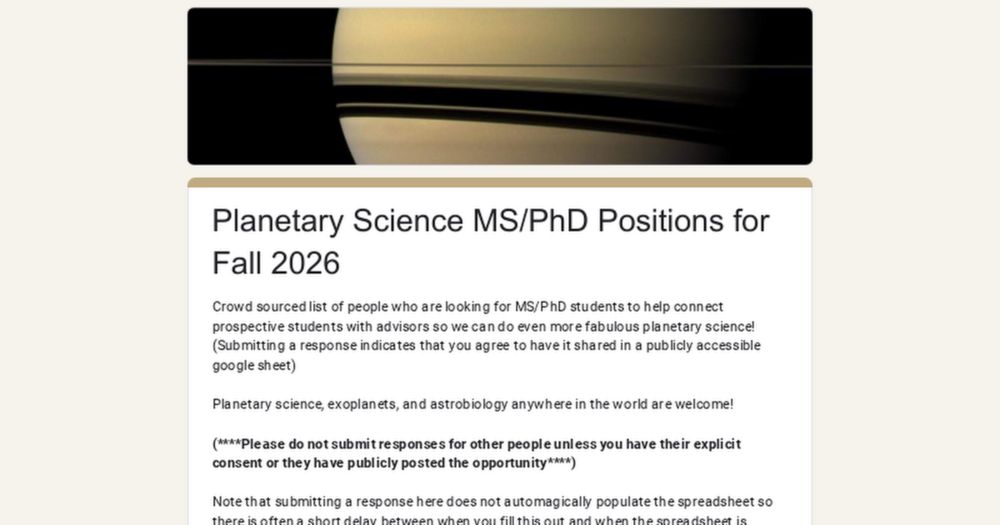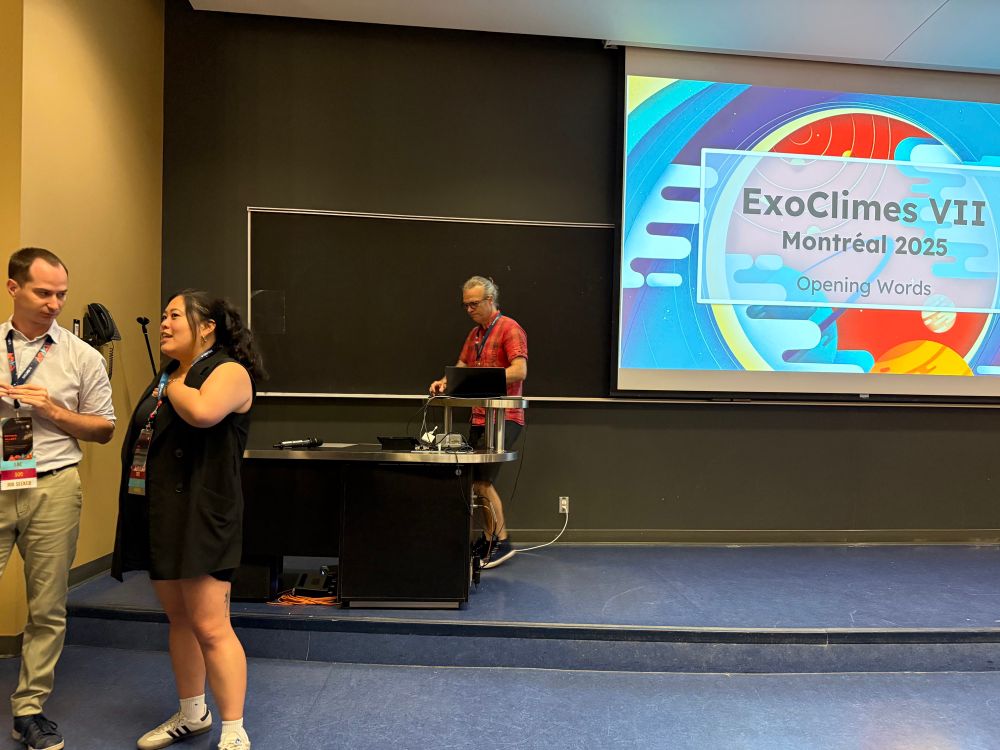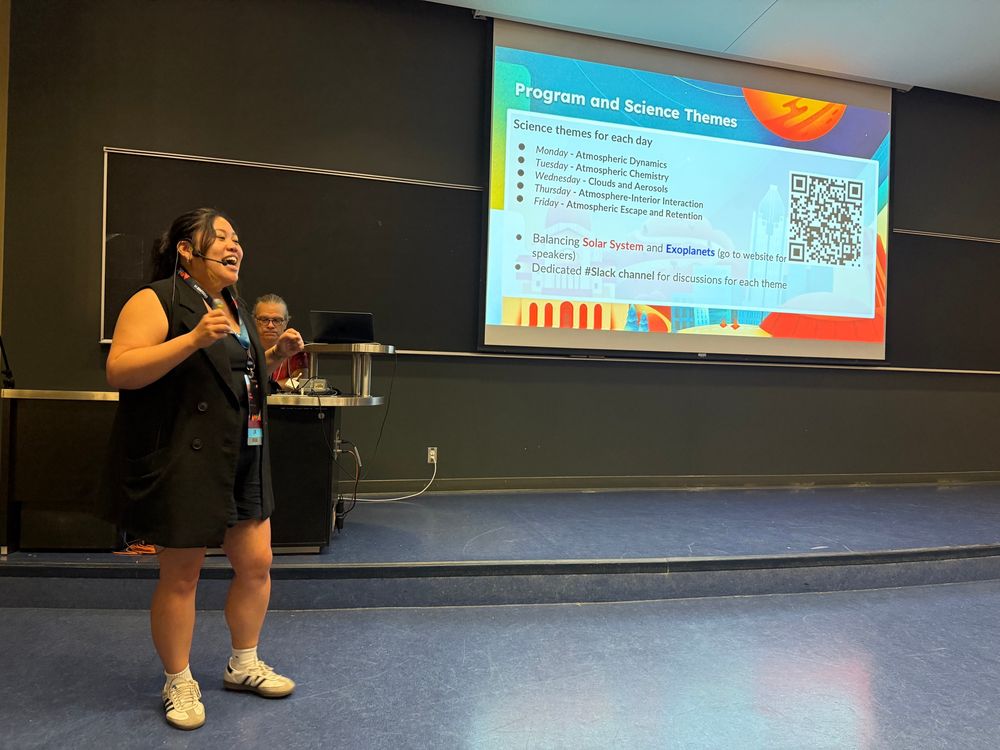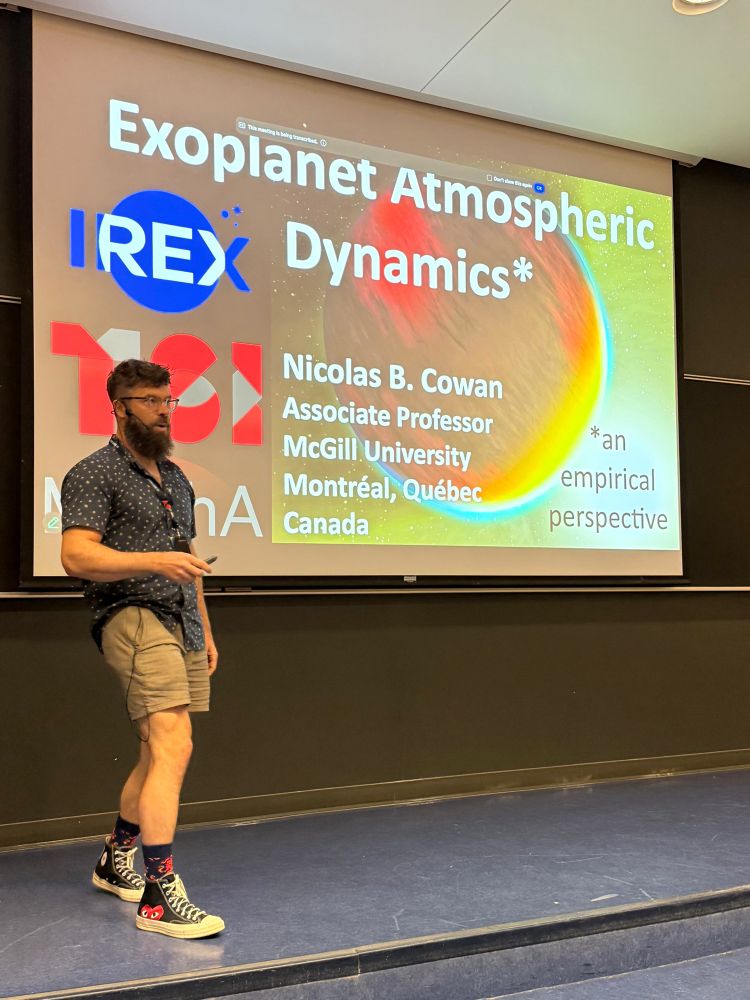

Happy 30th discovery day 51 Peg b! We're at Observatoire de Haute Provence where it all happened, listening to Michel Mayor & Didier Queloz tell us all about that extraordinary radial velocity discovery with ELODIE on the 1.93m in 1995 and the incredible exoplanet science that followed. What a day!
06.10.2025 08:59 — 👍 16 🔁 0 💬 0 📌 0
Congratulations Dr Boldt-Christmas! Very much deserved 🥳
26.09.2025 22:32 — 👍 1 🔁 0 💬 1 📌 0
We *absolutely* should celebrate it. Do your part by enjoying the 200+ page masterpiece in its entirety on ADS! ui.adsabs.harvard.edu/abs/1925PhDT... 🔭
Special shoutout to Figure 2, an incredible piece of art that I want on my wall (and suspect could even make an excellent tattoo if executed well?)
23.09.2025 20:03 — 👍 43 🔁 20 💬 4 📌 0

Cantiello @kantyellow.bsky.social at @flatironinstitute.org explains, in terms of fundamental physics, why we won’t be simulating stars in full 3D, ever. I likey.
19.09.2025 21:45 — 👍 15 🔁 3 💬 3 📌 0

The official number of exoplanets has surpassed 6,000! And you can access data on all 6,007 of them right here at IPAC 📈 🪐
Watch the video & read all about the center of the exoplanet universe (also known as NExScI!) here:
www.ipac.caltech.edu/news/the-nas...
18.09.2025 00:19 — 👍 92 🔁 32 💬 3 📌 4

The image shows seven hexagonal images put together like a flower. All the images show the Extremely Large Telescope (ELT) in front of an orange sun or moon rise. All the hexagons are dated and show the ELT assembly at the specific date.
1/ A rising telescope under a rising Sun and Moon! 🔭☀️🌕
This montage is a kaleidoscope of moments from the construction of our Extremely Large Telescope.
Creating this #ELT collage took Boris Häußler, an ESO astronomer in Chile, years of meticulous planning.
15.09.2025 07:02 — 👍 81 🔁 24 💬 2 📌 3

A pen sketch of a web page for an astronomer, showing name, email, optional phone number, and professional contact details, with a one sentence summary of their research and an ADS link.
My periodic reminder for #astrosci #astrodon #exoplanets Early Career Researchers to please, please, please have a simple web site with your current email address on it - rationale here: kenworthy.space/advice/
12.09.2025 04:22 — 👍 72 🔁 31 💬 1 📌 3
😮🤩 safe journey HARPS3!
08.09.2025 10:51 — 👍 7 🔁 0 💬 0 📌 0
Serious Q for the 🔭 community: is anyone planning to observe the 3I/ATLAS comet with any of the large ground-based telescopes (VLT etc) any time soon before it gets too close to the Sun (which is when)? Or have maybe already done so? ☄️💫
19.08.2025 12:04 — 👍 3 🔁 1 💬 4 📌 0
Yes, high spectral resolution in space is surely the future for exoplanets. It doesn't even need to be that "high" res, JWST's R=2,700 is delivering great science, just think what could be done with a R=3,000-5,000 integral field spectrograph behind a coronagraph on HWO 🤯
29.07.2025 13:26 — 👍 9 🔁 1 💬 1 📌 0
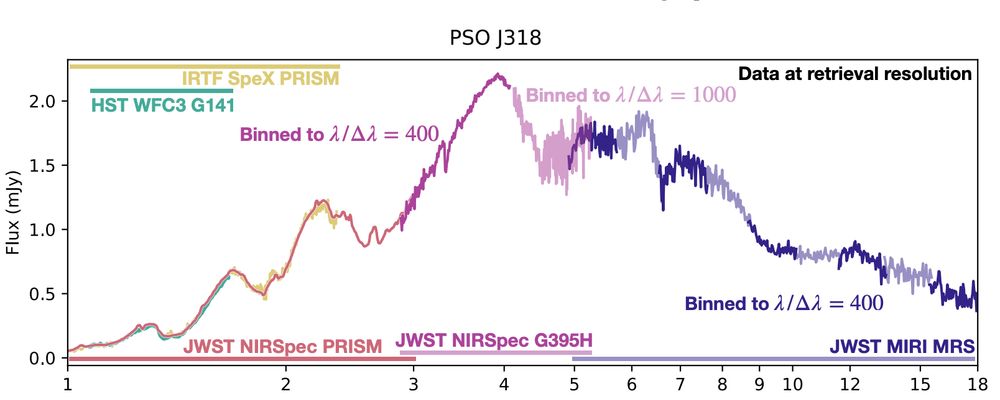
gorgeous new JWST spectrum of the rogue planet PSO J318 from @paulmolliere.bsky.social ! Strong absorption at 10 microns likely due to small SiO particles, acting as seeds for cloud formation arxiv.org/pdf/2507.18691
28.07.2025 11:43 — 👍 34 🔁 5 💬 0 📌 1
Hubble Space Telescope images of interstellar comet 3I/ATLAS are out! These were taken 5 hours ago. Plenty of cosmic rays peppering the images, but the comet's coma looks very nice and puffy. Best of luck to the researchers trying to write up papers for this... archive.stsci.edu/proposal_sea... 🔭
21.07.2025 21:28 — 👍 730 🔁 157 💬 13 📌 20
Job Details
Want to come and join our lovely facilitation team in Oxford Physics? my.corehr.com/pls/uoxrecru...
14.07.2025 15:14 — 👍 4 🔁 2 💬 1 📌 0
Stunning data, brightness maps of the supergiant star Antares showing its convective cells 😲 congrats Pilate et al.! ⭐
14.07.2025 16:25 — 👍 7 🔁 0 💬 0 📌 0

Groundhog at U of Montreal
One of the many #ExoclimesVII groundhogs, enjoying a nibble of grass on a sunny Montreal day
11.07.2025 14:22 — 👍 5 🔁 1 💬 0 📌 0
In our new paper we model the complete evolution of L 98-59 d from 'birth' up to the present day. We show that it cannot be a gas dwarf or a water world; it's a 'hybrid' planet with an H2-rich atmosphere containing H2S and SO2 (photochemistry!), and a deep magma ocean.
@timlichtenberg.bsky.social
04.07.2025 15:10 — 👍 28 🔁 7 💬 1 📌 1
Those of you at @exoclimes.bsky.social can hear all about Dr Vaughan's work on Wednesday next week!
03.07.2025 06:53 — 👍 3 🔁 0 💬 0 📌 0
Dr Vaughan's thesis work on studying exoplanet atmospheres in reflected light opens a vital avenue to seeking biosignatures on nearby habitable worlds with the Extremely Large Telescope in 2030, and beyond with the Habitable Worlds Observatory! @eso.org ras.ac.uk/news-and-pre...
03.07.2025 06:49 — 👍 0 🔁 0 💬 0 📌 0
Absolutely thrilled for Dr Sophia Vaughan, winner of the RAS Michael Penston Thesis Prize! Congratulations @sophiavaughan.bsky.social, very much deserved and it's been an absolute pleasure working with you! Bring on the ELTs! @oxfordphysics.bsky.social www.physics.ox.ac.uk/news/dr-vaug...
03.07.2025 06:49 — 👍 21 🔁 2 💬 2 📌 0
New paper out! This is a review of the published JWST observations of rocky exoplanets so far: arxiv.org/abs/2507.00933
Quick summary of the key points:
02.07.2025 08:34 — 👍 63 🔁 16 💬 3 📌 3
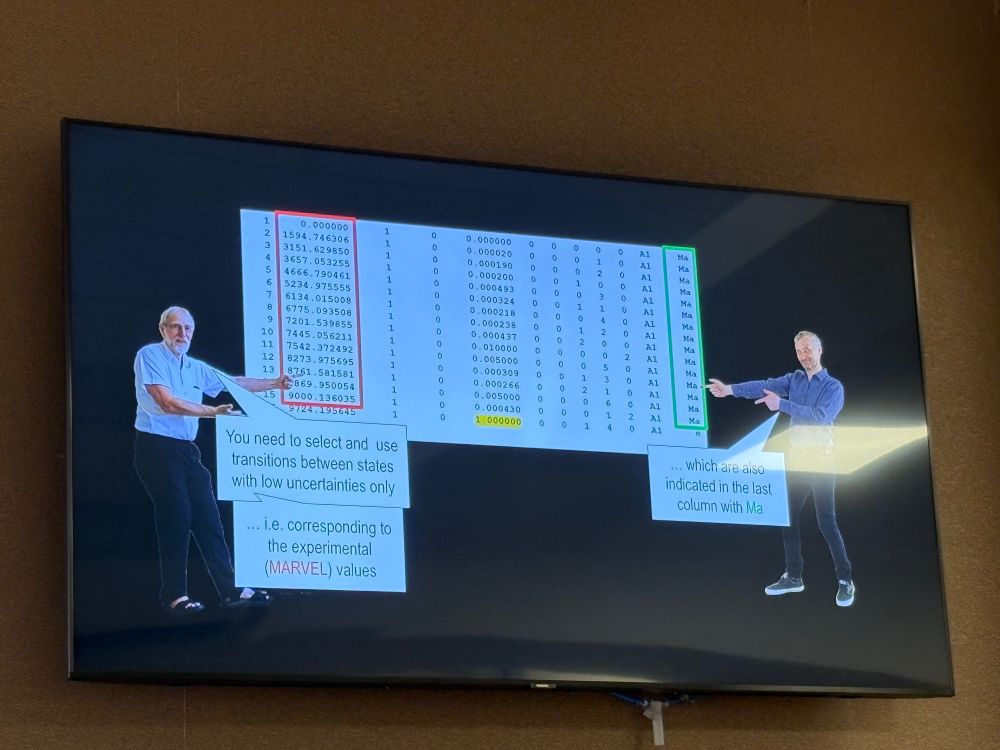
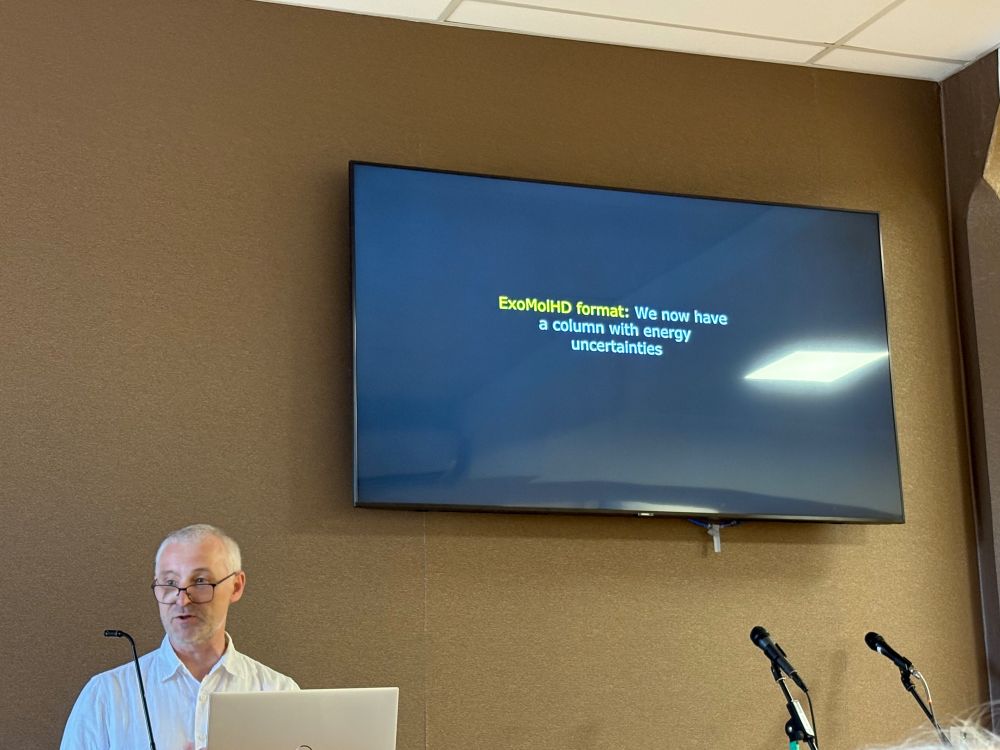
PSA: ExoMol has a special high res data base, ExoMolHR which now also contains a column with ✨energy uncertainties✨ You can now choose to leave out lines with high uncertainty when making high res model spectra! #AllTheWavelengths @trovemaster.bsky.social
28.06.2025 13:56 — 👍 3 🔁 0 💬 0 📌 0
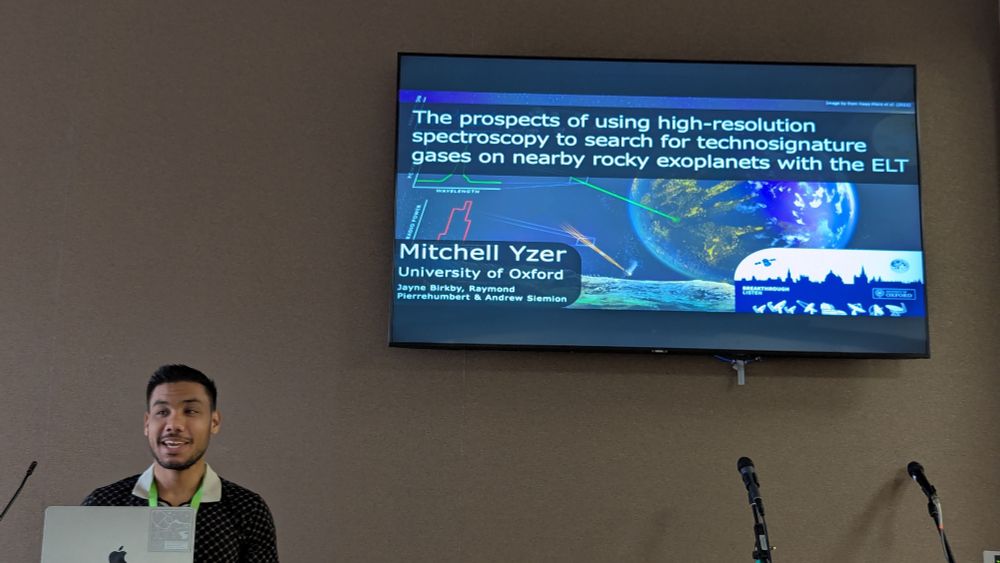
Mitchell Yzer (Oxford): The Prospects of Using High-Resolution Spectroscopy to Search for Technosignature Gases on Nearby Rocky Exoplanets with the ELT.
#AllTheWavelenghts
28.06.2025 08:46 — 👍 10 🔁 2 💬 2 📌 0
Mitchel Yzer: techno signatures in exoplanets using high resolution methods #Allthewavelengths
28.06.2025 08:47 — 👍 1 🔁 1 💬 1 📌 0
Wakeford: near-infrared wavelength spectra are not good predictors of what happens at UV/optical wavelengths. We need the information from the broader spectral range. #exoplanets #allthewavelengths
28.06.2025 08:17 — 👍 4 🔁 1 💬 0 📌 0
Thank you for the summary thread Ryan @distantworlds.space! #AllTheWavelengths
27.06.2025 10:11 — 👍 4 🔁 1 💬 0 📌 0
Professor of Chemistry & Planetary Sciences at Dordt University (IA) and Research Scientist with the Space Science Institute (CO)
Github: https://cvisscher.github.io/
Exoplanets research fellow at ESO Chile 🪐 She/her 🏳️🌈
Professor of Astronomy, Planetary Sciences, and Optics at The University of Arizona. I study exoplanets, build telescopes, and lead the NASA-funded Alien Earths astrobiology team. Fellow of AAAS and The Explorers Club. Own opinions.
Postdoc on Exoplanets and Stellar activity at Oxford
Geek, Gardener, Liberal, day job Head of Research Facilitation for Oxford Physics, posting as myself. Still hoping to make the future a better place.
Astrophysics PhD student at the university of Oxford studying exoplanet atmospheres
professional astronomer at ULiège • exoplanet imaging, infrared instrumentation, image processing, machine learning
Atmospheric modeling and retrieval group
Max Planck Institute for Astronomy
Oxford PhD researcher in transatlantic and scientific history. SETI person, beekeeping instructor.
Official account for #ExoclimesVII on July 7-11th 2025 in Montréal, Canada! The ExoSLAM summer school aimed at early career researchers will take place July 3-5
Science journalist, champagneophile, nap champ. Currently freelance, formerly National Geographic. 🇱🇧🇺🇸🏳️🌈
Signal: nadiadrake.01
Exoplaneteer 🪐 Marathon runner 🏃🏻♀️ Dog mum 🐕Human mum 👶🏻 Vegan 🌱 Anglo Uruguayan 🇬🇧🇺🇾 Feminist 🙋🏻♀️ JRF @ Oxford Uni 👩🏻🎓 Broadcaster 📺 #BiInSci 🏳️🌈
Astronomy, Exoplanets, Astrobiology, Cool Worlds Lab, Columbia University. Be kind to one another.
Postdoc 🪐 University of Warwick Astro Group studying transiting exoplanets with TESS + NGTS 🪐 bass guitar wrangler, disaster goth 🪐 they/she
News for Oxfordshire. Est. 2022.
Weekly newsletter: https://oxfordclarion.uk
For stories: news@oxfordclarion.uk







